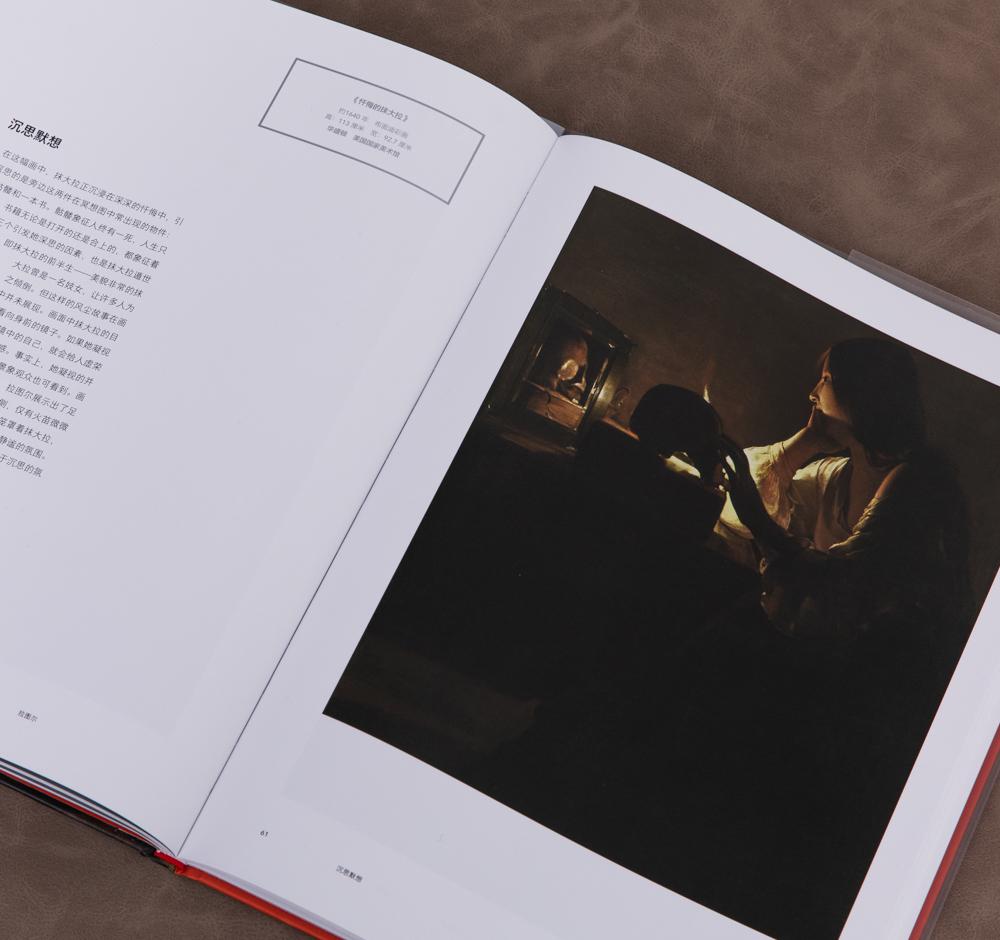Latour was a once forgotten painter.
Although he enjoyed a great reputation during his lifetime, the change in style at the end of the 17th century made his works unpopular, and his paintings lacked the signature and year of creation, and many of his works were attributed to others, and gradually his name was forgotten.

Over the centuries, many of Latour's works have been lost, and many works have been mistaken for the works of others, and many works have been damaged or even altered by others. It was not until the last century that Latour's work was re-emphasized.
Latour's work was so influenced by Caravaggio that many of Latour's works were thought to have been written by Caravaggio.
Source: Art museum on paper series "Latour: So There Is Light"
Latour's paintings do not depict outdoor scenes, no landscapes, not even interior decorations, only bare walls to reflect this light and shadow. You will find that the light in his paintings is particularly good-looking, as a figure between Caravaggio and Vermeer, you can more or less see their shadows in Latour's works.
Source: Art museum on paper series "Latour: So There Is Light"
Latour was a devout Catholic, and his time coincided with the great power of the Reformation, and the Principality of Lorraine, where he was born, was located next to Germany, and the impact was naturally great.
We can see a large number of Catholic-related works in the atlas, and he has always defended his faith through a paintbrush. However, his religious paintings are very different from the religious paintings in everyone's impressions, because the form of expression of the content of the picture is different.
Renaissance religious paintings, expressing a kind of solemnity, gods or saints are high beings, can obviously see the difference from ordinary people. In Latour's paintings, there is no obvious sense of boundary between religious and secular themes. Every story of God, acting like a small scene that takes place in everyday life, is both serious and funny, too delicate to be true.
Secular painting is now the most prestigious type of painting in Latour.
Even the main visuals, posters and ticket designs for the recent metropolitan museum of art exhibition held at the Tokyo National New Art Show chose Latour's "Female Diviner".
The exhibition site also deliberately placed Caravaggio and Latour on the same wall! It was really emotional to see Rachel. It was Turner's success in chasing stars, and Claude Loren exhibited on the same wall as he was moved (*1).
"Cheater of Square A/Cheater of Grass Flower A" (*2) should be seen by most people, and the expressions of everyone in it are exaggerated but realistic, which makes people tired of watching.
In the middle of the picture, the woman reveals her breasts, and the cunning and evil mental activity is already contained in the expression; the maid wears a pale yellow turban, which is the representative color of the betrayer Judas, which has been used in the painting of Judas's clothes; the man on the left leans on the table, not because of fatigue, but to cover his money on the gambling table with fat sleeves and the silk satin hanging from his shoulders, so as not to let his opponent count.
In fact, the painting depicts the man on the right facing three temptations of the 17th century: gambling, wine, and color. The man is gorgeously dressed and has a simple expression, and he knows that it is very deceitful at a glance. Obviously, it is so dangerous, but I don't know it. And such a scene can happen to each of us, and that's what makes this painting scary.
In the Japanese drama "Peter's Funeral", this painting appears frequently, metaphorically implying the unfathomable of the human heart. This work also became the cover of the first volume of the famous work "Hokage (Timid Don't Look at the Painting)" by Japanese art writer Kyoko Nakano.
It can even be said that the initial fire of this set of books has a lot to do with the choice of Latour as the cover.
Source: Art museum on paper series "Latour: So There Is Light"
From the 16th and 17th centuries onwards, the painter's theme was no longer limited to religious themes, and Latour's works were displayed in the album, which was the most appropriate expression of this era.
Speaking of his secular paintings, one can see in the paintings the sympathy of this devout Catholic, which comes from the painter's deep religious beliefs and expresses his sad feelings for the lower classes of the people at that time.
In addition to Latour's own works, a large number of works of different painters related to the style of Latour's paintings are displayed, so that readers can understand that era and understand Latour more comprehensively.
If during the Baroque period, Latour created such works for Catholic propagation only to make people who began to shake their faith be touched by the divine beauty of candlelight, then what does such religious works, together with other secular paintings, move people from all walks of life and everywhere today?
Latour's unforgettable candlelight, as well as his vision, continues to charm people.
The charm of Latour's light and shadow is all in "On Paper Art Museum". The content of this set of books is moderately difficult, which is suitable for artistic enlightenment and is a "high-definition big picture" that you often struggle to find, and it is a cost-effective "popular science album".